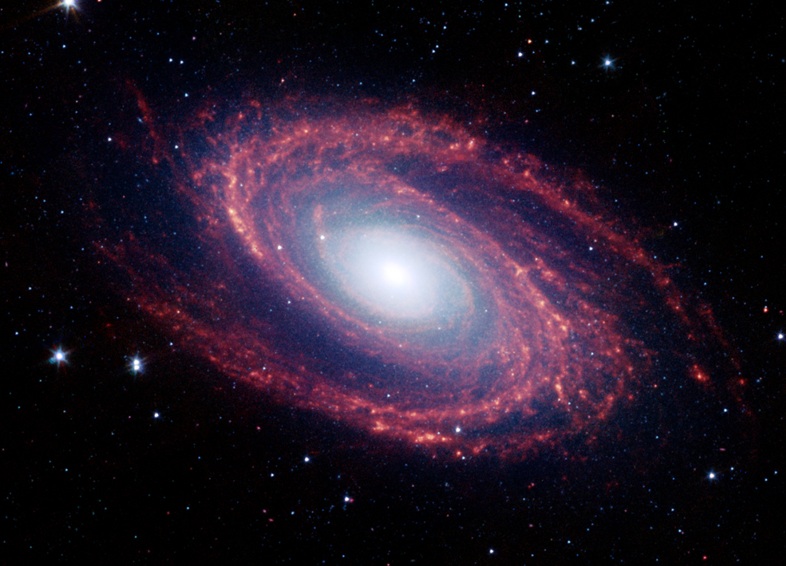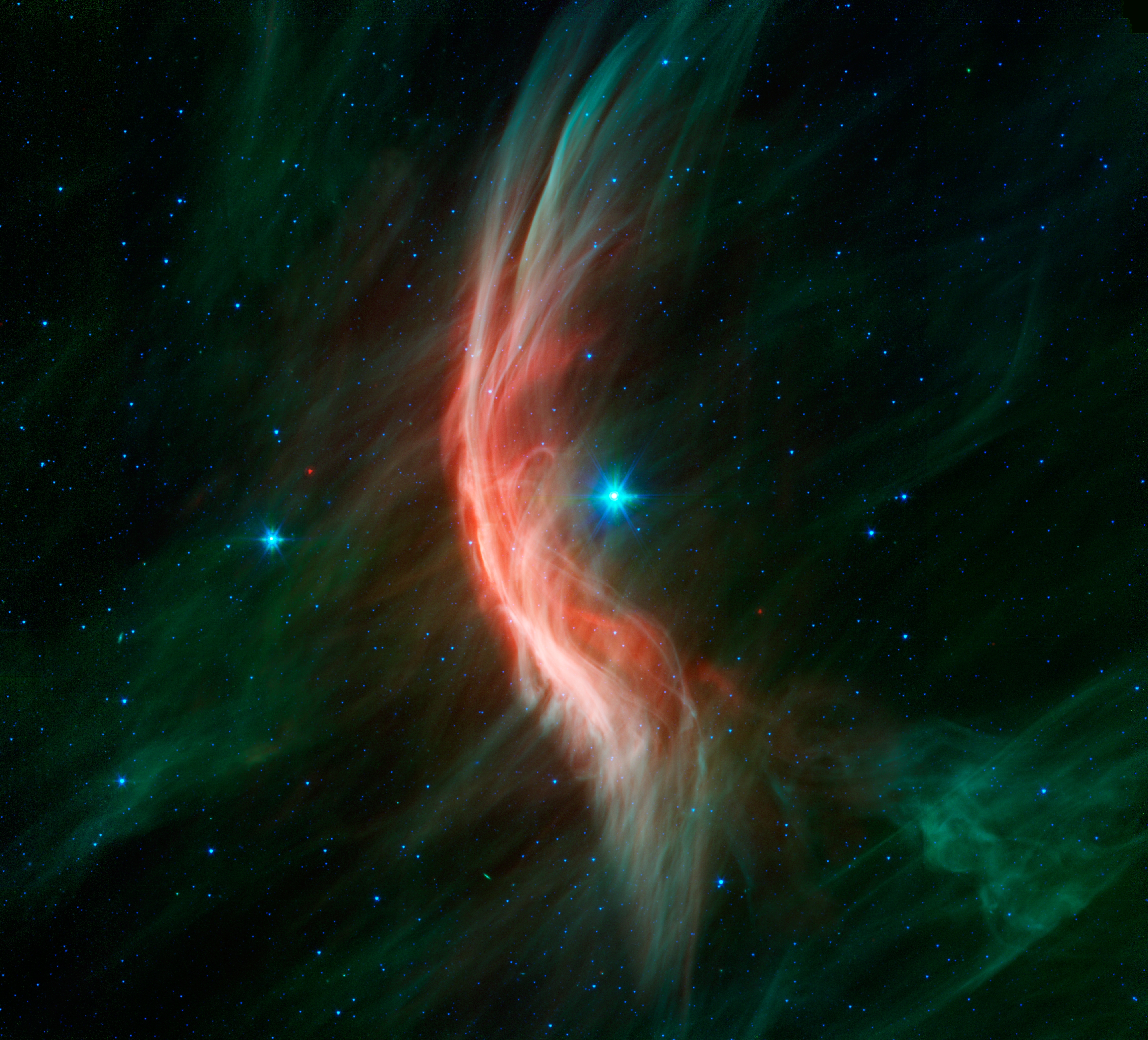
Contrary to popular belief, space is not empty. The space between the stars is filled with clouds of dust and gas. And this space—the interstellar medium—is incredibly beautiful and fascinating.
I often refer to the interstellar medium as the galaxy’s “backstage.” Why? Because it’s not the part of the universe that astronomy enthusiasts usually think about. And yet, there are whole studies devoted to studying this natural wonder of the universe.
Also, the interstellar medium is largely hidden from us. There are ways we can detect it—when light from a distant star passes through it, for example. And with our eyes, we can see nebulae, the visible evidence of this interstellar expanse.
The backstage of a theater is similar—it’s not the main part of the show, but you sometimes see evidence of it in the forms of new costumes donned as the play progresses and new props brought into play. The audience often forgets about it entirely.
Nevertheless, it’s beautiful. Stars are born out of giant molecular clouds, triggered by compression from expanding bubbles of coronal gas. The interstellar medium spells our beginning.
But how did it get there?

The interstellar medium, like most of the universe, is composed largely of hydrogen and helium. It’s no coincidence that stars, including our own sun, are made primarily of these two elements. And there’s clear evidence that most of the hydrogen and helium in the interstellar medium is left over from our galaxy’s formation.
This makes a lot of sense. Hydrogen and helium were the first elements to form—hydrogen being the very first. Hydrogen is the simplest element, with a single electron orbiting a single proton, and helium just has an extra proton and electron.
The hydrogen and helium left over from our galaxy’s formation has never been inside stars. But much of the interstellar medium has—in fact, much of it was produced by stars.
Think of stars not as tiny points of light in the night sky, but rather as the massive, immensely hot balls of plasma they are. A star is a collection of free-floating hydrogen, some helium, and a small amount of heavier elements held together by its own gravity, and fusing hydrogen into helium for fuel deep in its core.
If only the force of gravity were at work, stars wouldn’t live long. They are a balance between outward pressures—a result of basically being a ball of hot gas—and inward collapse due to gravity.
If a star has too much mass for its fuel, it’ll fall victim to that gravity eventually and implode; if it has too little mass, it’ll fall victim to that gas pressure and blow itself apart. But that’s getting a little ahead of ourselves. For now, what’s relevant is that stars do blow their material outward into space.
That’s what forms the interstellar medium.
But…wait a second. I thought stars were made of hydrogen and helium? Shouldn’t star death account for that part of the interstellar medium, not the heavier elements?
Not quite. By the time a star dies, it will have exhausted its fuel supply of hydrogen, fused helium, exhausted that supply, and moved on to heavier elements. So when a star returns its material to the space around it, mainly heavier elements like carbon and silicon will remain.
There is, however, another culprit for the formation of the interstellar medium, and that’s coronal gas.

This isn’t exactly coronal gas. It’s a supernova remnant known as the Crab Nebula. Basically, it’s what’s left of an exploded star.
Coronal gas is a specific type of gas cloud within the interstellar medium that’s formed when supernovae (plural for supernova) blast large pockets of expanding gas outward. So, there you have it. Coronal gas is specifically what’s left of high-mass stars.
But the best part of all this is that it’s an exchange. Stars are formed deep within giant molecular clouds. They live out their lifespans of billions of years and then blow apart, returning their material to the interstellar medium. And that same material can later become new stars and planets.
In my last post, I discussed how expanding pockets of coronal gas can compress giant molecular clouds (GMCs) and trigger star formation. But that’s not the only way that can happen.
When stars go supernova, they send shock waves through the interstellar medium—these are basically the equivalent of a sonic boom.
For the most part, the interstellar medium remains in balance, the different types of clouds all exerting the same pressure upon one another. But still, they are hardly static. Shock waves stir up the interstellar medium, and even compress gas to higher densities—forming new molecular clouds.
If a shock wave hits a molecular cloud, it’s entirely likely that star formation will be triggered in the more dense regions.
Another way the interstellar medium is stirred and compressed is simply by the motion of stars. As a star travels in its orbit around the galactic center, something happens that is very similar to a boat plowing through the ocean.

I’m going to venture an educated guess and say this boat is in motion.
Notice what happens as the boat plows forward? It doesn’t need to explode to send waves rippling through the water—the point of its bow cuts through the water, throwing waves and sea spray up to either side. It’s quite a violent process, if I do say so myself.
Stars, similarly, create bow shock.

Basically, as the star Betelgeuse moves, it creates something similar to the wake of a boat. And you can see this halo of bow shock in this infrared image—it shows up as green bands around the star.
And here’s another example of bow shock, this time courtesy of the star Zeta Ophiuchi, the 24th brightest star in the constellation Ophiuchus.

Pretty cool, huh? In this image, you can clearly see how Beta Ophiuchi’s forward motion has literally pushed the interstellar dust and gas ahead of it, not all that different from the wake of a boat.
And…that’s it for the interstellar medium! Next up, I’m going to backtrack just a little bit. I was asked a very interesting question the other day, and I intend to explore it in my next post. So next up, we’ll take a brief foray back into the compositions of stars!